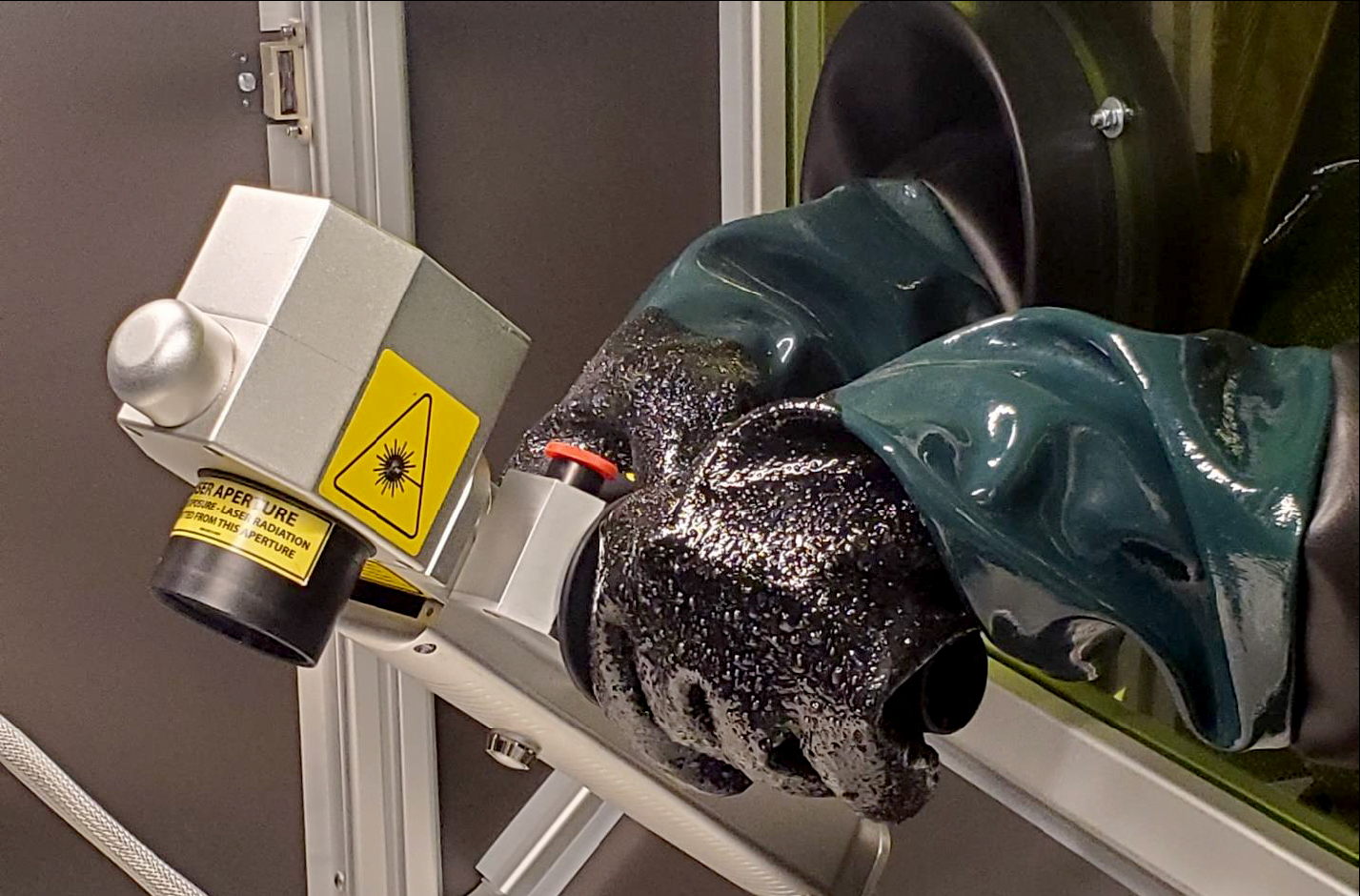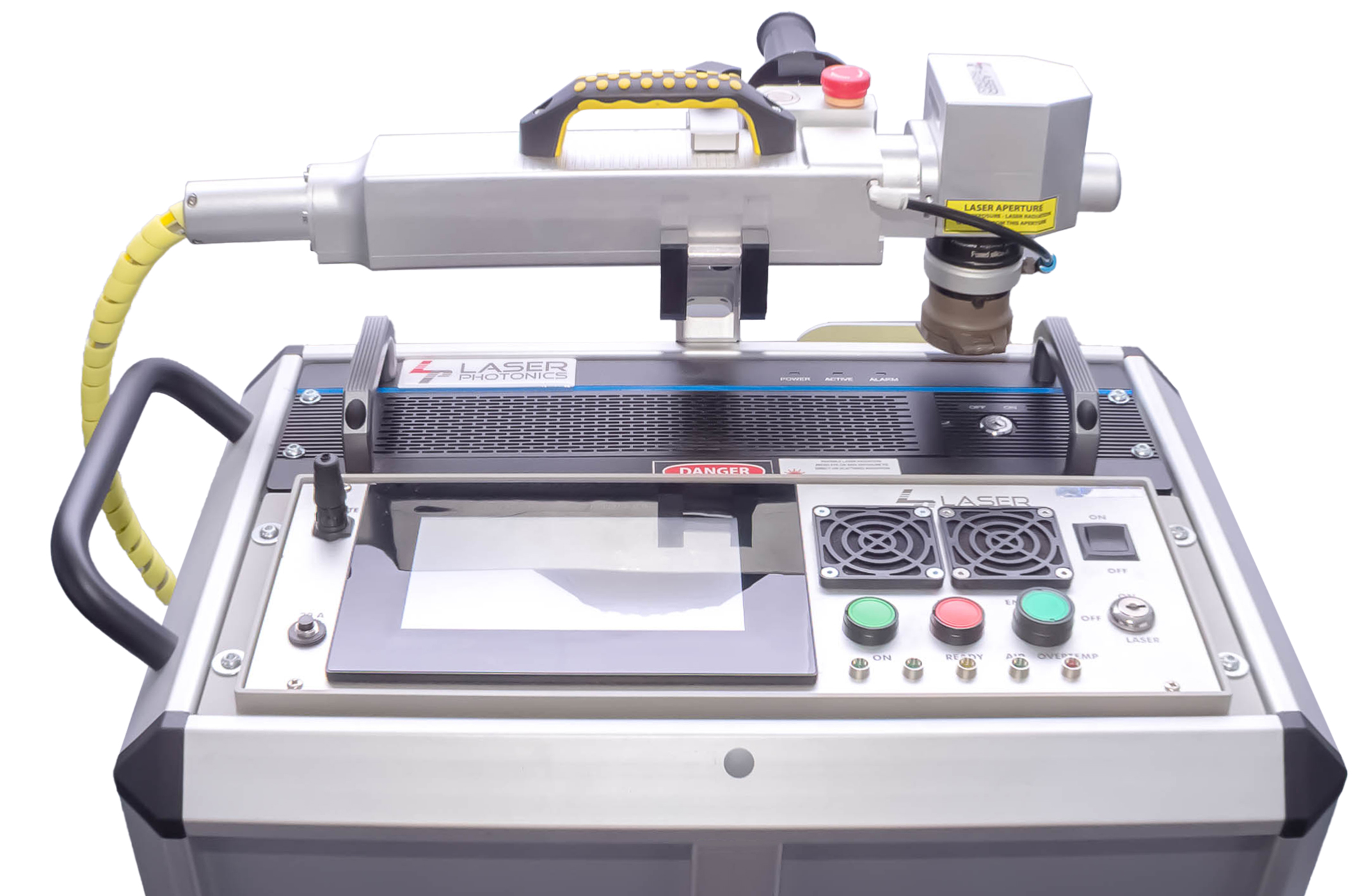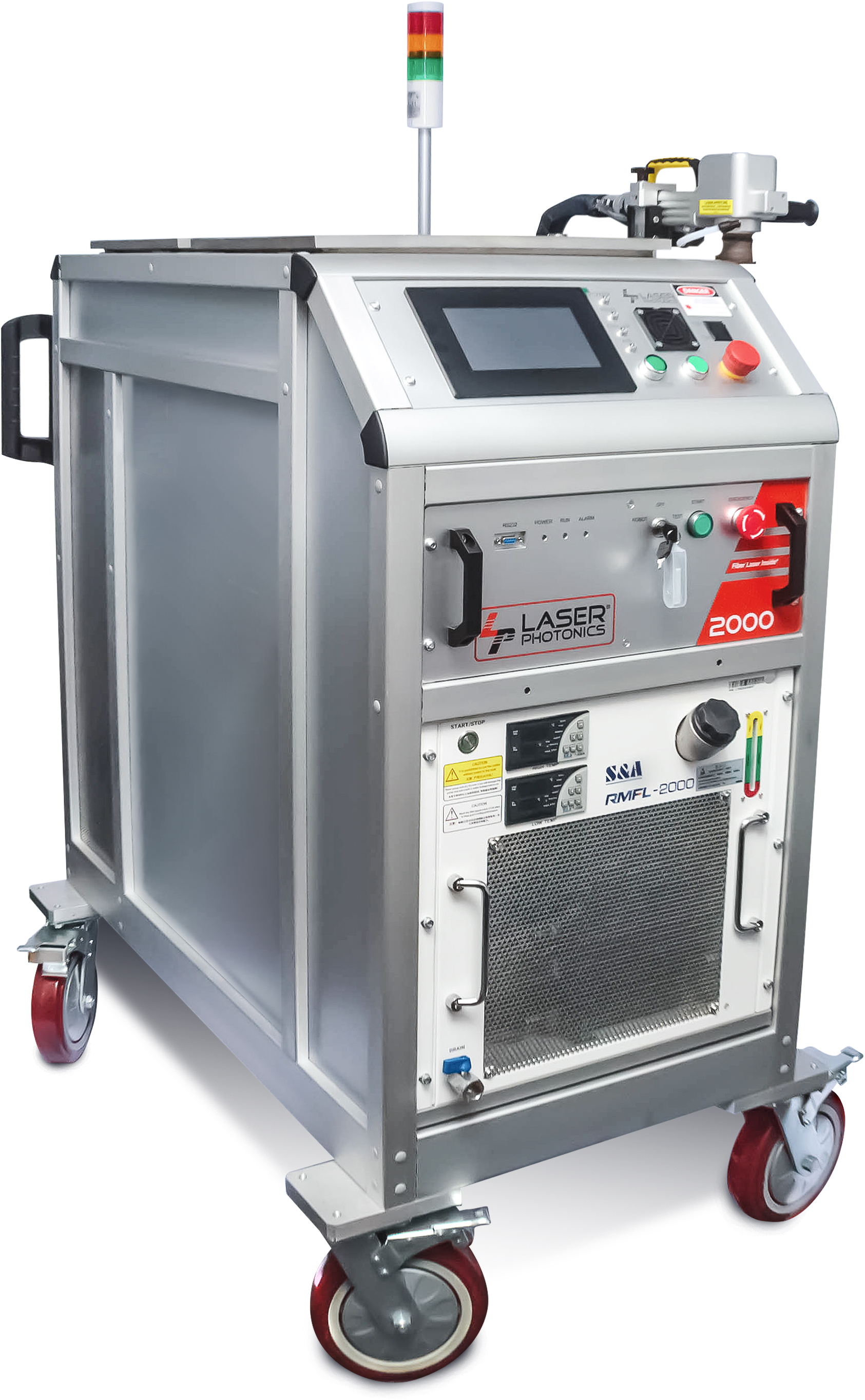
High quality welding begins with cleaning the base metal of any corrosion, contaminants, or existing coatings that could compromise weld penetration and integrity. Ensuring the metal is properly cleaned from the start makes the job easier and eliminates the need to start over to achieve a clean weld.
Traditional methods
Unfortunately, the traditional techniques used for this purpose – such as sandblasting, chemical stripping, and grinding – are messy and require expensive consumables, as well as substantial time for preparation and cleanup. These methods are also drawing scrutiny from regulators like the EPA and OSHA since they can pose risks to the environment and applicators.
A more effective alternative
Today, a more effective alternative is utilizing industrial-grade, precision laser-based systems that can remove contaminants, rust, residues, and paint from the weld surface with a high-energy laser beam that leaves the substrate unaffected. Preparation and cleanup time are minimal, and the low-maintenance equipment can last decades.
According to Vincent Galiardi, owner of Galiardi Laser Clean, a surface cleaning operator based in St. Charles County, Missouri, many people are surprised to learn that clean technology lasers are the most cost-effective, efficient, and safest method of industrial surface preparation.
“Many people are unfamiliar with the use of lasers to treat metal surfaces,” says Galiardi. “When I do a demonstration, at first the people in attendance are skeptical. By the end, when I let them try the equipment, everyone is having a good time and saying how great the laser works.”
Significant advantages in safety and efficiency
For welding applications, Galiardi says, “Pre-weld, laser technology can effectively clean the surface so there is no contamination [to interfere with the weld.] Post-weld, lasers can remove discoloration due to oxidation, which can help to improve stainless steel welds.”
Given its effectiveness treating metal surfaces, industrial laser systems are increasingly being used in welding applications.
Resolving Conventional Cleaning Challenges
Pre-weld, any impurities on the surface of the base material such as grime, residue, corrosion, mill scale, or old coatings will compromise the weld’s effectiveness.

Any contaminants can interfere with the process, cause resistance, or result in a weld splash when small metal particles become airborne or remain loosely attached to the welding area. Contamination on a weld’s surface leads to porosity, or bubbles of trapped gas in a finished weld that can weaken its mechanical properties and requires rework.
Post-weld cleaning
Post-weld cleaning is also necessary, particularly for stainless steel. Stainless steel offers natural corrosion protection through an ability to “passivize” itself if the environment provides enough oxygen to repair a surface film comprised of chromium oxide. However, welding can cause a “heat tint” – a discolored, thickened top layer on the stainless steel around the weld bead within the heat affected zone – that compromises the corrosion resistance.
To treat weld surfaces, sandblasting, chemical stripping, or grinding are traditionally used as industrial cleaning processes. However, these options have limitations.
Safe, Effective Laser Cleaning
Laser-based systems have significant advantages over these traditional methods, including ease of use in which an operator simply points and clicks a high-energy laser beam at the surface.
Galiardi Laser Clean uses laser systems made by Orlando, Florida-based Laser Photonics, a leading provider of patented industrial grade CleanTech® laser systems for cleaning and surface conditioning. The American-made systems function either as mobile standalone units or can be integrated into production lines.
The laser systems are available in portable and stationary models ranging from 50 to 3,000-watts (a 4,000-watt version is in development) with chamber sizes from 3’ x 3’ in size to 6’ x 12’. The systems can also be installed in manufacturing lines in cabinets or operated by a robotic arm.
A success story

He relates how he used a portable CleanTech laser system for a welding project for the iconic skywalk at the Grand Canyon. The skywalk extends over the rim of the Grand Canyon and provides a clear view thousands of feet to the canyon floor below.
“When I did the skywalk job at the Grand Canyon, I removed paint [from the skywalk welds] with the laser system to allow non-destructive testing of the welds [before repainting]. The system’s portability made it quick and easy to use in the field without the cleanup or safety issues of conventional cleaning processes,” says Galiardi.
“CleanTech laser systems can last for 50,000 to 100,000 hours. That’s many decades working eight-hour days. After purchase, there’s virtually no maintenance necessary,” concludes Galiardi.



